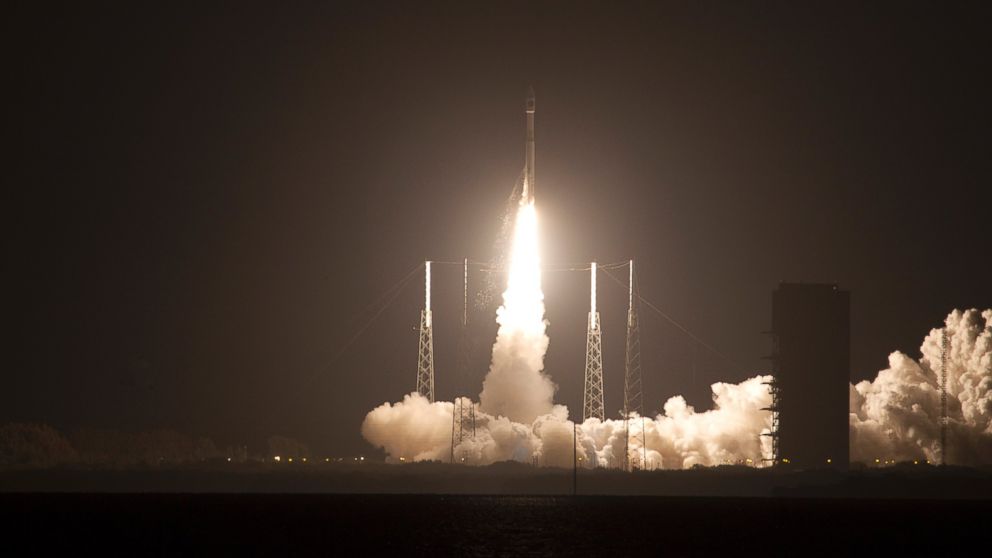NASA Spacecraft on Mission to Solve Earth's Magnetic Mystery
Mission will study process believed to spark explosions in solar system.

— -- A quartet of NASA observatories are spending their first day orbiting Earth on a mission to study the interaction between our planet and sun's magnetic fields.
The phenomenon, called magnetic re-connection, occurs when the Earth and sun's magnetic fields come together, separate and then merge again. The process is believed to be the catalyst for explosive bursts of energy that can impact electronics on Earth, including GPS navigation, communication systems and power grids.
NASA hopes data collected during the billion-dollar two-year mission will lead to a better understanding of space weather and the explosions that send particles flying at the speed of light.
The four spacecraft were stacked atop each other Thursday night and blasted into space on a United Launch Alliance Atlas V 421 rocket from Cape Canaveral in Florida and separated in five minute increments once they were safely in space.
"All four of our spacecraft have deployed and data indicates we have a healthy fleet," said Craig Tooley, a NASA project manager.
Each observatory stretches 11-feet wide and 4-feet high and weighs in at around 3,000 pounds, according to NASA. Scientists will test instruments on each observatory over the next several weeks before the spacecraft assume a pyramid formation. Science observations are set to begin in September.
While the mission is expected to yield new insights about the titanic explosions surrounding Earth, scientists expect it will also shed new light on magnetic re-connection in other parts of the solar system.




